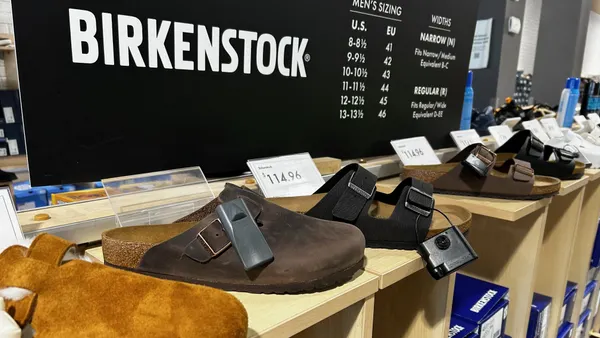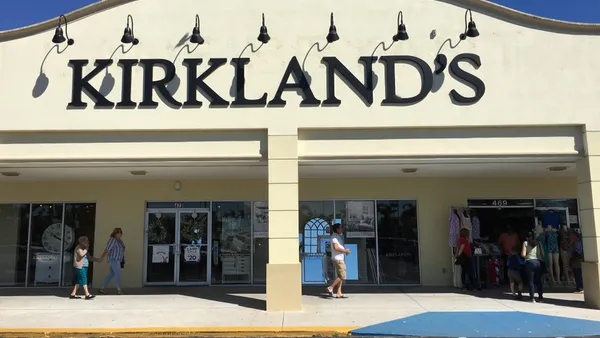Dive Brief:
- Third-quarter store closures at Sears and Bon-Ton (not including owner-occupied ones that also shuttered) pushed the mall vacancy rate to 9.1% from 8.6% last quarter, the largest quarterly increase since 2009 and a retreat from the low of 7.8% in the fourth quarter of 2016. The mall vacancy rate had earlier peaked at 9.4% in the third quarter of 2011, according to retail real estate research firm Reis.
- Average mall rents fell 0.3% in the quarter to $43.25 per square foot, the first decline since 2011, according to the report, which was emailed to Retail Dive. While growth had been sluggish over the last few quarters, it remained positive until now.
- Retail vacancy rate at neighborhood and community shopping centers stayed flat at 10.2%; rent growth is 0.4%. A ‘clear turnaround” is demonstrated in the positive net absorption of 2.29 million square feet in the period, down from the 3.76 million square feet in the second quarter from numerous Toys ‘R’ Us and Babies ‘R’ Us store closings. Construction of 2.28 million square feet was the highest level in three quarters.
Dive Insight:
The retail landscape continues to evolve — correcting an over-saturation of stores that had built up for decades and shifting with new trends that have consumers both buying online and spending money on experiences.
"[T]he occupants moving into retail space include a number of gyms, a few trampoline parks, furniture and houseware stores and grocery stores," Reis Senior Economist Barbara Byrne Denham wrote in the report. "[T]he retail landscape keeps changing as more entertainment and service providers lease traditional retail space. This has kept the overall retail occupancy positive most quarters."
The quarterly snapshot from Reis captures the steady change, and Denham said the contraction will continue, noting that "the retail sector is still correcting" and "the growth of e-commerce has rendered a number of older retailers obsolete."
Not all older retailers. Best Buy, Walmart and Target, for example, have retooled supply chains and merchandising to meet digital demand, and improved stores to spur traffic. Costco, which has taken its time to grow e-commerce, and Amazon, which epitomizes it, are both opening new stores. And while Macy’s has been working to unload many of the department store chains it acquired two decades ago, department stores like Nordstrom and Dillard’s that never over-extended themselves are maintaining and even adding to their fleets.
"Leasing activity remains solid and continues to improve. Average base rent … up 3.3% compared to last year," David Simon, CEO of Simon Property Group, Inc. told analysts in July, according to a transcript from Seeking Alpha. "Retail sales were strong across the portfolio with sales productivity increasing each month throughout the quarter."
Still, while more upscale malls like Simon’s are thriving, less premium ones may be doomed. "While there are a few new construction projects in the pipeline, a number of obsolete shopping centers have sold as development sites," Denham noted. "We expect to see more conversions, demolitions and major renovations as this sector continues to adapt to the changes induced by e-commerce."














